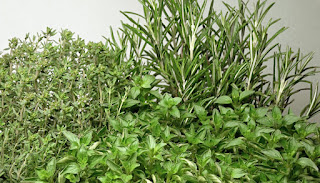LINGUINE WITH BACON AND CHEESE
300 g (10.6 oz) linguine
75 g (2.6 oz) bacon, chopped
1 cup grated Parmesan
1 cup grated Cheddar
2 cups grated Gruyere
1 garlic clove, peeled and mashed
2 tbsp trimmed and chopped spring onions
½ tsp paprika
500 ml (2 cups) cream
1 tsp Dijon mustard
Boil the linguine in salted water until “al dente”, drain
and cover to keep warm. Cook the bacon
in olive oil until crisp and place on kitchen paper to drain.
Lower the heat and simmer the cream, add the three kinds of
cheese, garlic, mustard, paprika, and simmer, stirring, for 5 minutes until the cheeses have melted
and the sauce thickens. Taste and add a
little salt and pepper, if necessary. Add the linguine and the bacon to the
sauce and serve sprinkled with chopped spring onions.
SPAGHETTI WITH
SMOKED TUNNY FISH AND OLIVES
375 g (13.2 oz) spaghetti
2 tins of smoked tunny fish in olive oil
1 cup, stoned kalamata olives, sliced
800 g (1.7 lb) ripe tomatoes, peeled, deseeded, and chopped
1 onion, peeled and chopped
2 garlic cloves, peeled and mashed
2 tbsp fresh basil, chopped
1 tsp sugar or more according to the acidity of the tomatoes
75 g (2.6 oz) feta, crumbled
Boil the spaghetti in salted water, drain and keep
warm. Drain the oil from the tunny fish
reserving I tablespoonful. Sauté the
onion in the reserved oil until translucent.
Add the garlic and
cook for 1 minute longer, then add the tomatoes and sugar
and simmer gently until the sauce thickens about 10 minutes. Add the tunny fish, basil and simmer for 2
minutes more.
Drizzle the
spaghetti with the tunny fish sauce and sprinkle with freshly ground black
pepper and crumbled feta and serve immediately.
SPAGHETTI WITH MUSSELS
400 g (14 oz)
spaghetti boiled in salted water, and strained
1 kg (2 lb) fresh
mussels
Water
3 cloves garlic,
peeled and finely chopped
4 tbsp white wine
2 tbsp olive oil
Salt and pepper to
taste
Scrub the mussels
under running water and discard the threads.
Place them in a saucepan with a glass of water, over moderate heat,
until they start opening and remove from the saucepan with a slotted spoon,.
Place them on kitchen paper to drain and discard the ones that don’t
open. Reserve the liquid.
Sauté the parsley
and garlic in olive oil and cook for 2-3 minutes. Add the mussels, the strained liquid, and the
wine and cook over medium heat. Sprinkle with salt and pepper if
necessary. Place the spaghetti in the sauce
and simmer for 2 minutes more. Serve
without cheese.
ORZO WITH
MUSHROOMS
In Greece we
usually use orzo to prepare youvetsi, a delectable pasta dish with meat or
poultry. In this version, it is combined
with mushrooms and it is superb.
2 tbsp olive oil
2 onions, peeled
and chopped
500 g (1 lb) fresh
mushrooms, trimmed, wiped, and quartered
2 roasted garlic
cloves, peeled
500 ml (2 cups)
tasty vegetable stock or more
2 cups orzo
Salt and freshly
ground black pepper to taste
Grated Parmesan
Sauté the onion in
olive oil with some water until soft.
Add the mushrooms, roasted garlic, and cook until the mushrooms are
tender and golden
Pour in the stock
and bring to a boil, stir in the orzo, lower the heat, and simmer, covered for
about 15-20 minutes until the pasta is cooked to perfection, adding more stock,
if necessary. Taste and season
accordingly. Serve sprinkled with grated
Parmesan
PLEASE VACCINATE YOURSELVES AGAINST COVID-19 SO THAT YOUR BELOVED FAMILIES, FRIENDS, THE WORLD WILL REMAIN HEALTHY AND SAFE





















































